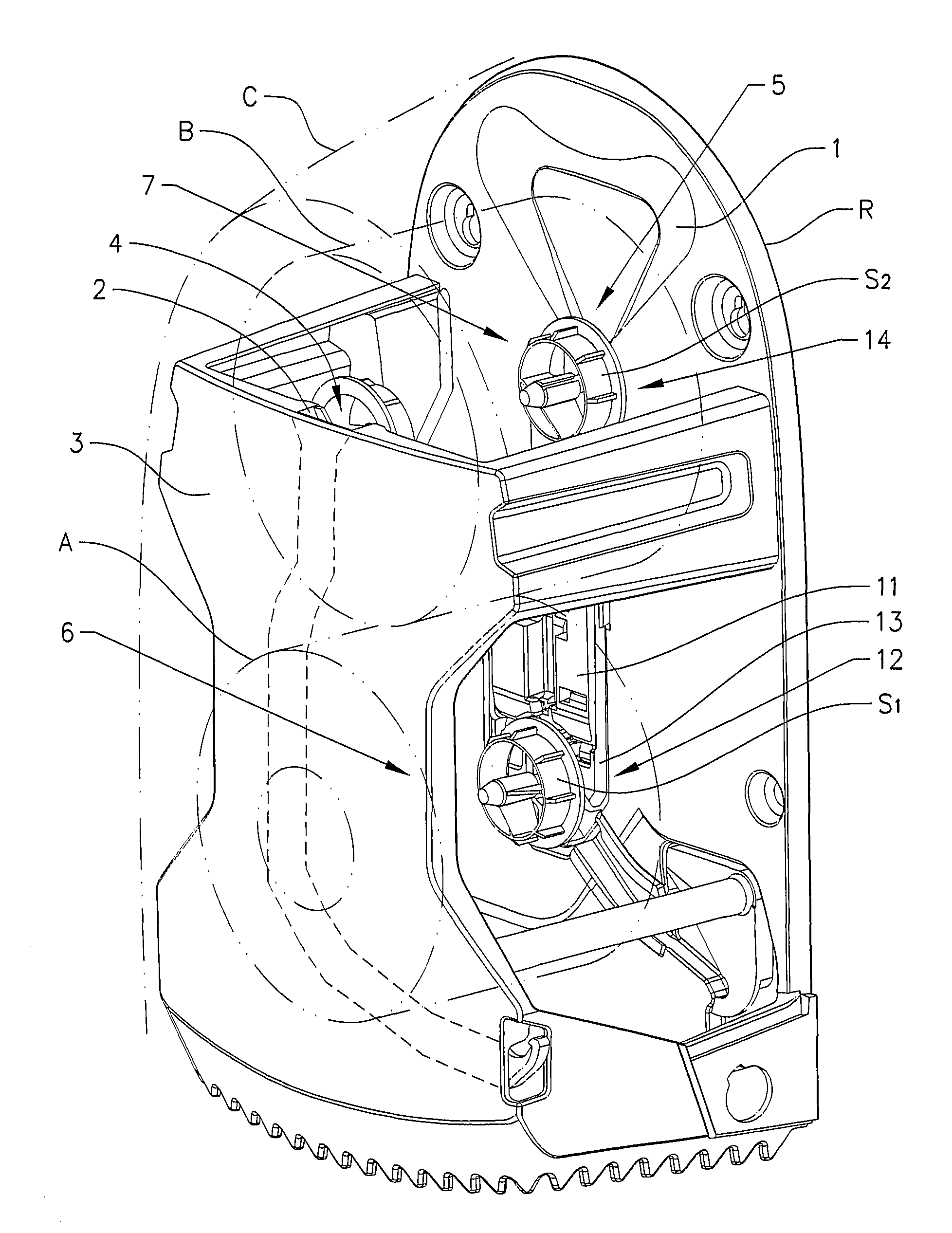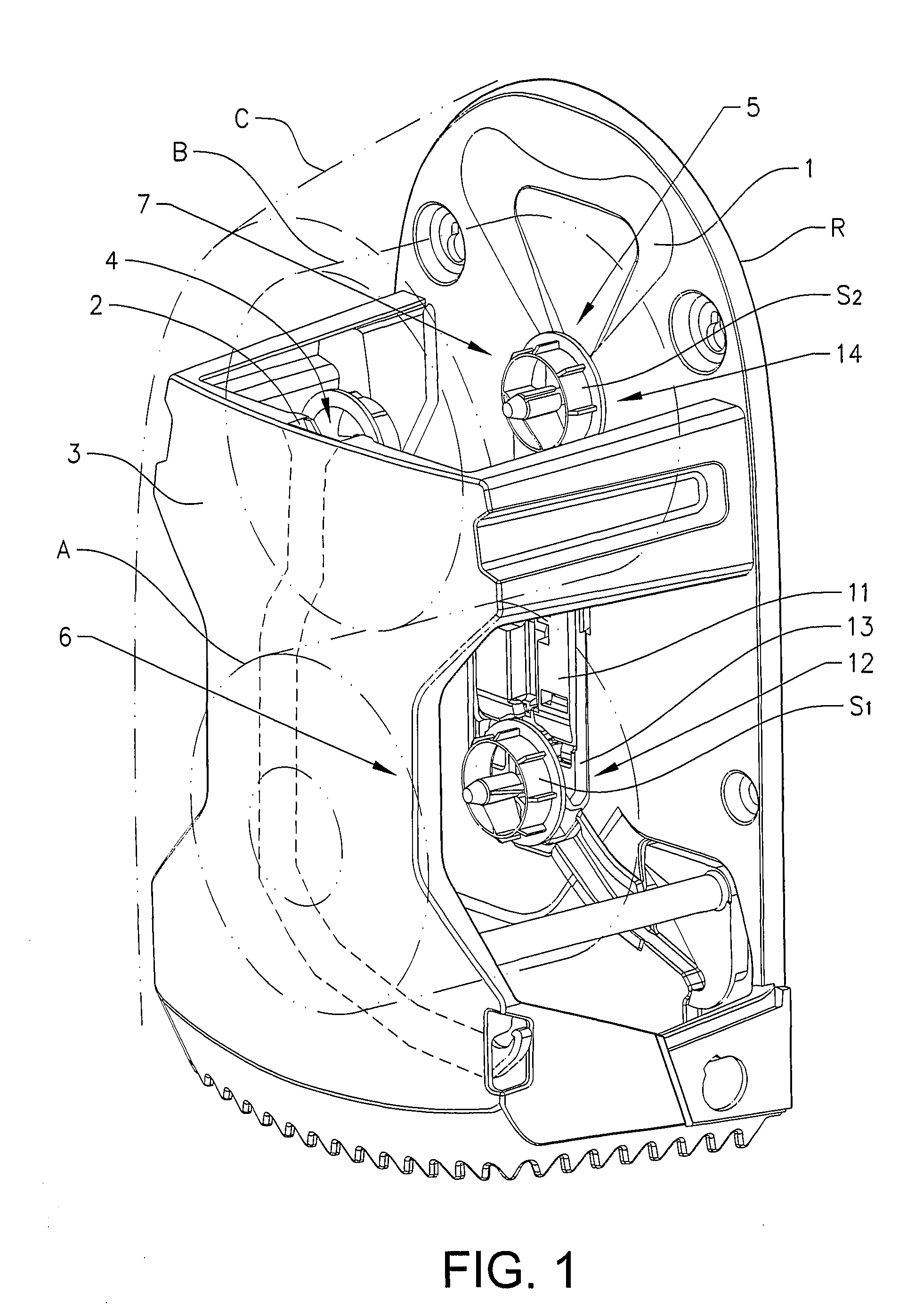Dispenser for rolls
a dispenser and roll technology, applied in the field of dispensers, can solve the problems of paper waste unnecessarily, difficulty in determining when a roll is substantially exhausted, and affect the function and reliability of the dispenser, and achieve the effect of reducing the speed of the second roll
- Summary
- Abstract
- Description
- Claims
- Application Information
AI Technical Summary
Benefits of technology
Problems solved by technology
Method used
Image
Examples
Embodiment Construction
[0040]FIG. 1 show a schematic chassis for a wall mounted dispenser according to the invention. In the figure, an outer cover C surrounding the front and sides of the dispenser has been removed for clarity and is indicated with dash-dotted lines only. In the subsequent text the terms “inner” and “outer” are used to denote the position of components in relation to a rear section R, unless otherwise indicated. The rear section R is intended to be mounted on a wall or a similar vertical or near vertical surface. In the examples described below, the rolls are placed in the dispenser with their axes at substantially right angles to the rear section R of the wall mounted dispenser. The dispenser in this particular example can be used with any suitable type of coreless rolls, rolls with cores and solid rolls, as described above. However, the example below only describes rolls with cores having central spindle means S1, S2 inserted into the ends of the roll and extending axially outwardly be...
PUM
 Login to View More
Login to View More Abstract
Description
Claims
Application Information
 Login to View More
Login to View More - R&D
- Intellectual Property
- Life Sciences
- Materials
- Tech Scout
- Unparalleled Data Quality
- Higher Quality Content
- 60% Fewer Hallucinations
Browse by: Latest US Patents, China's latest patents, Technical Efficacy Thesaurus, Application Domain, Technology Topic, Popular Technical Reports.
© 2025 PatSnap. All rights reserved.Legal|Privacy policy|Modern Slavery Act Transparency Statement|Sitemap|About US| Contact US: help@patsnap.com



